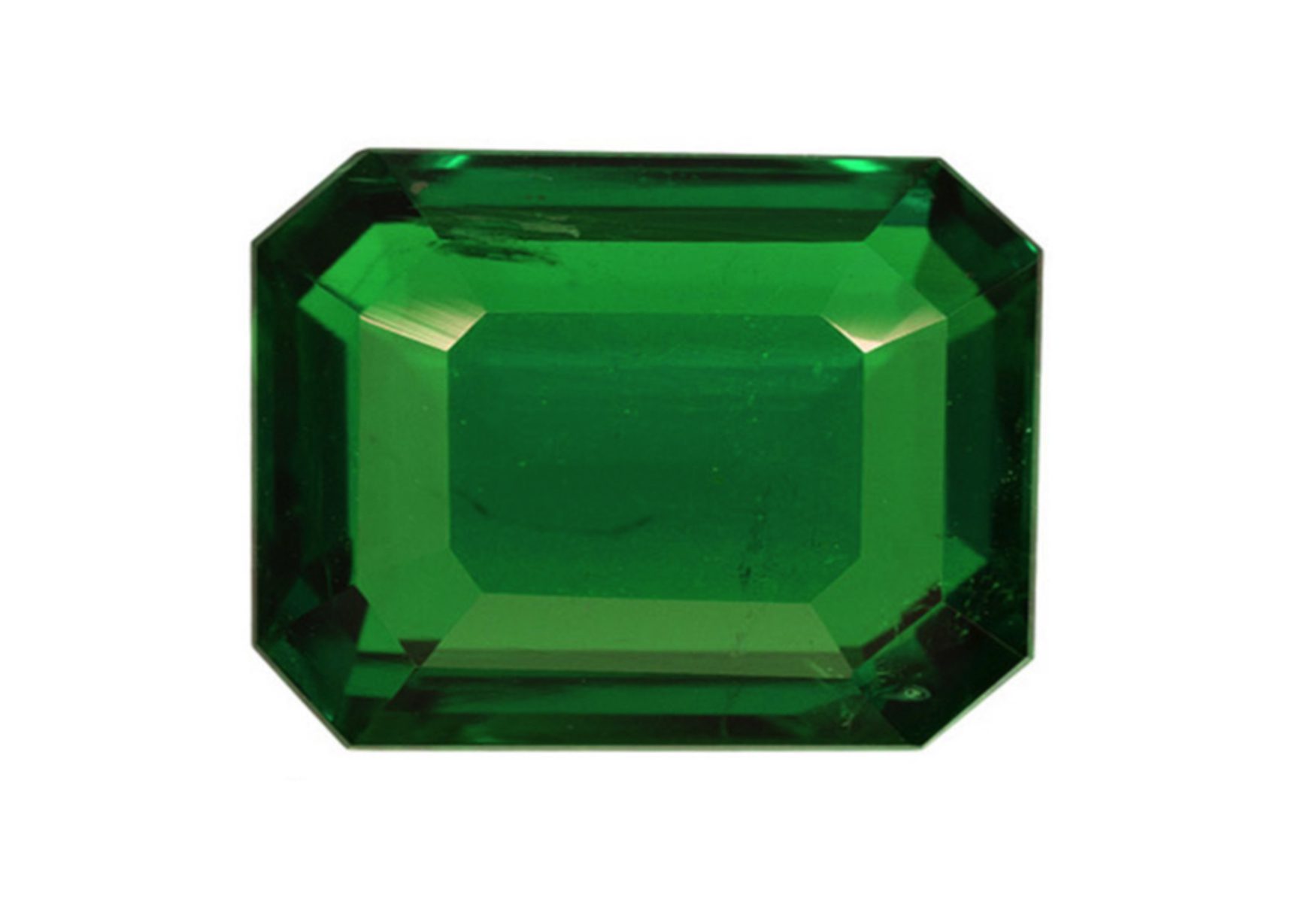Emerald Quality Simplified
Evaluating emerald quality, especially clarity, can be very complex. Navneet Gems & Minerals has proposed the following system for grading emerald clarity.
2 Minute Read
Although this is a non-standard grading system, it helps illustrate the types of inclusions and other clarity features you might encounter in emeralds and how they can affect the gem's appearance. Keep in mind that grading may vary between vendors. Always ask for an explanation of any emerald quality grades before purchasing.
Investment Grade
Emeralds of this type barely have flaws. While most emeralds have inclusions, investment grade emeralds can be eye clean or may have very slight blemishes or tiny visible pinpoints. They may also have some very slight visible feathers.
AAA+
These emeralds have blemishes, visible swirls, slight clouds, or slight feathers (camouflaged in color). 10 to 20% of an AAA+ quality stone may have feathers or strong, eye-visible pinpoints that may even form clouds.
Interested in this topic?
This article is also a part of our Emerald Specialist Mini Course, in the unit Grading Emeralds.
AAA
These emeralds may have eye-visible white clouds. Some may have eye-visible black dots, too. Up to 30% of an AAA stone could be included, depending on the inclusion type. Although the table is usually clean, the stone's sides may have more than a few inclusions.
AA+
These emeralds may have white inclusions usually covering 40% of their bodies. AA+ stones are considered better quality than AA stones, which may have black spots, especially on their faces. Although AA- stones may have the same type of inclusions as AA+, these are definitely more visible and thus distracting to the viewer.
AA
Although these emeralds can come pretty clean, just one medium to large-size black spot can lower the grade to AA. Nevertheless, this grade is better than AA-, in which many white inclusions can cover around 60% of the gemstone.
AA-
This type of emerald will have around 60% of the stone covered with some type of inclusions. AA- can't have black inclusions but may show AA quality with some white inclusions. However, these white inclusions have more visibility than those in AA stones. AA- emeralds also have many surface reaching inclusions. Thus, most of these stones have a high number of resin/oil filled fractures.
A+
These emeralds will have numerous eye-visible, high-relief, black crystal inclusions. They will also have high-relief white clouds covering about 70 to 75% of their bodies.
A
This grade means that more than 80% of an emerald is covered with cloudy inclusions. Emeralds of A quality may also have black spots and start to appear translucent.
A-
These low-quality emeralds may show very little transparency. More importantly, 30 to 40% of an A- stone may contain very big fractures, which may make that section look completely opaque. An A- stone can also be 85 to 90% included. Since this grade is considered "low," these emeralds sell for much less.
B
In this second lowest level of emerald quality, black inclusions appear more dominantly than in previous grades. All inclusions, mostly high-relief black mixed with white, are visible from a distance. B stones usually have high-relief inclusions in their centers. In order to fix so many inclusions with fracture fillings, they may even be surface broken.
C
These stones usually have a variety of high-relief inclusions all over their bodies. These inclusions can make a stone appear 90 to 100% opaque. C emeralds may also have yellow iron oxide stains, surface reaching cracks, black inclusions, 2 and 3-phase inclusions, mineral needles running throughout, clouds, and/or pinpoints. Typically, C stones are cut into cabochons or perhaps low-quality faceted pieces.
Navneet Agarwal, Navneet Gems & Minerals
Navneet Gems & Minerals is a wholesale manufacturer of consistent quality precious and semi-precious gemstones for jewelry makers around the world.
Related Articles
Emerald Value, Price, and Jewelry Information
Emerald Transformation: Cleaning and Recutting a Natural Emerald
Choosing an Emerald Engagement Ring Stone
Trapiche Gems: An Introduction
Latest Articles
800 Years of Mogok: A Celebration in Tenuous Times
What is the Average Gemstone Faceting Yield?
Pyroxmangite Value, Price, and Jewelry Information
How to Identify Emerald Simulants and Synthetics
Never Stop Learning
When you join the IGS community, you get trusted diamond & gemstone information when you need it.
Get Gemology Insights
Get started with the International Gem Society’s free guide to gemstone identification. Join our weekly newsletter & get a free copy of the Gem ID Checklist!
